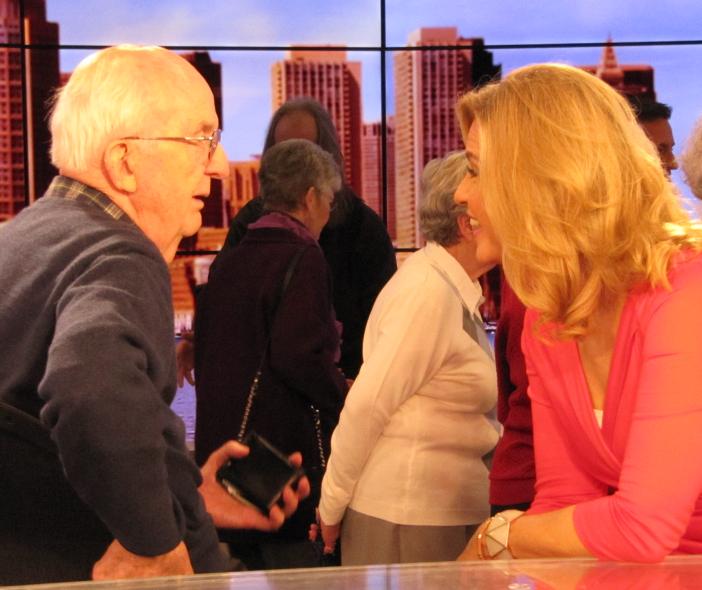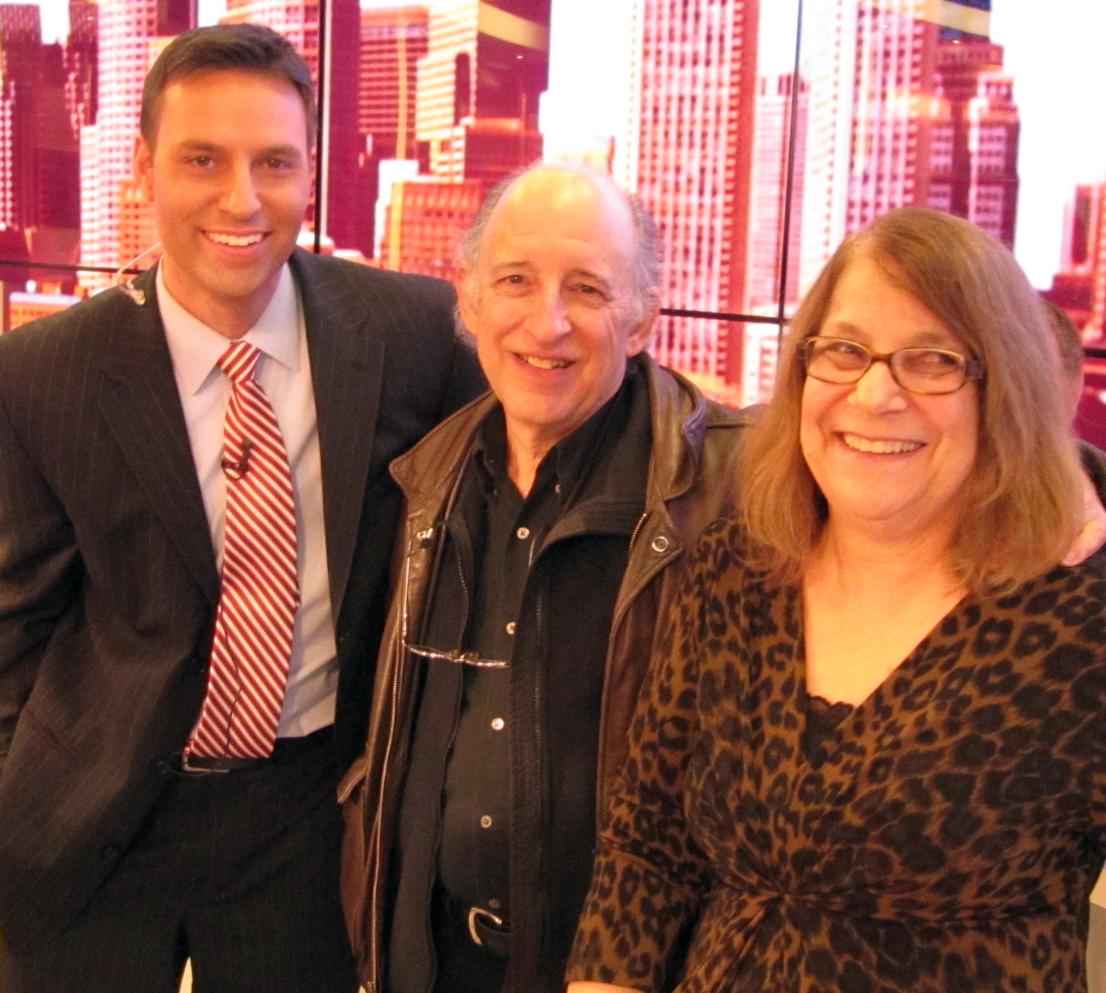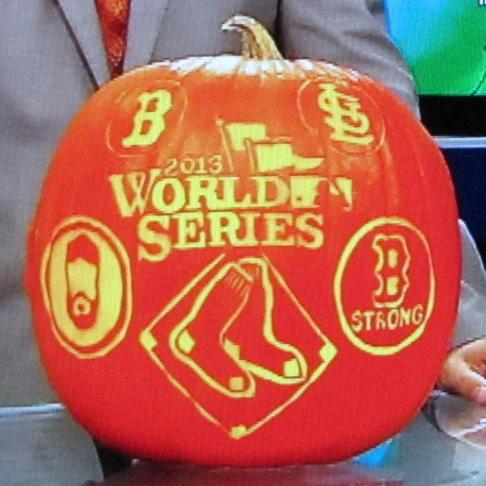 Last Thursday, which was Halloween (October 31), Margie and I participated in a tour of the WBZ studios on Soldiers Field Road in Boston, Massachusetts. Taking part in activities sponsored by the Wayland Council on Aging is one of the benefits of getting older, one we've only recently started taking advantage of.
Mike began by telling us a bit about the station and its history. WBZ-TV is Channel 4 in the Boston area, and is owned by CBS Corporation, which also runs WSBK-TV (channel 38). Mike then brought us to the newsroom, where we learned a bit about the path taken by a story before it ends up on the air. Our visit was timed to allow us to be present for the noon newscast, being anchored by Paula Ebben, with meteorologist Todd Gutner presenting the weather. Note 1 The photo below shows the set, with anchor Paula Ebben at the news desk, just one minute into the broadcast: 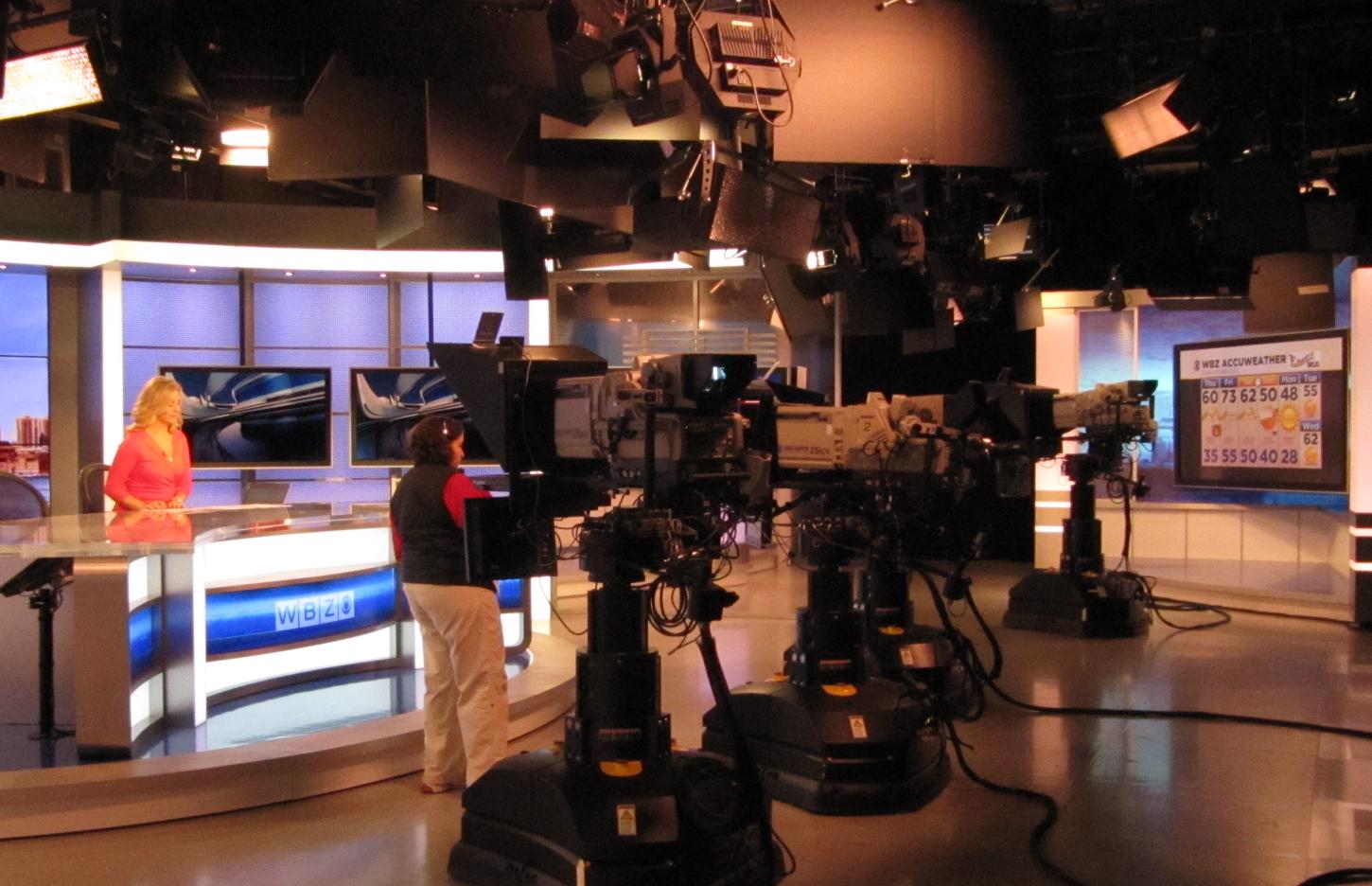 Note that there are no camera operators - the cameras are remotely controlled from the control room. Over to the right, you can see the separate set used for the weather forecast. Weather is a major preoccupation in New England - a considerable percentage of each news broadcast is devoted to the weather. I've noticed that a lot less time is spent on the weather in European news shows. Because I expressed an interest (engineer that I am), Mike took me off to the control room during the broadcast - all the others in our group stayed in the studio. During the newscast, I took the following photo of one of the large multi-window monitors in the control room (click on the image to zoom back and see more of the monitor). It shows David Wade, normally a news "anchor", broadcasting live from Fenway Park. Our visit was the day after the Boston Red Sox won the baseball World Series, so news of the city's celebration dominated the newscast. 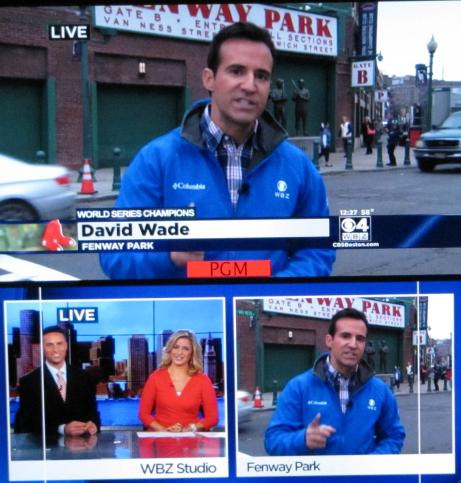 The lower-left of the image shows the feed from the studio, with Todd Gutner on the left and Paula Ebben on the right. The image isn't the sharpest, because it's a photograph of a monitor. I'll write more about what I saw in the control room in a subsequent blog entry.
The news desk is much more brightly lit than the rest of the room. The lights are however energy-efficient LED lamps, which are far cooler than the high-intensity incandescent lamps that used to be used. Great care goes into the lighting to avoid dark areas or glare. In addition to multiple lamps, I noted many black boards strategically hung from the ceiling to prevent excessive light from reaching certain areas. Note 2 The picture below shows Meteorologist Todd Gutner with me and Margie:
I complimented Todd on his excellent coverage of the New England tornado outbreak which had occurred on June 1, 2011. By the end of that day, violent storms had spawned six tornados, in Springfield, Massachusetts, and other towns in the Connecticut River valley. I recalled his live coverage that day as conveying just the right degree of urgency, without inciting panic. We ended the tour with a group portrait:  Recall that our excellent tour guide, Mike Nosel, is a set designer and set builder. How many people do you know who get to carve a pumpkin as part of their job?
What he had not yet done at the time of the noon newscast was to scoop out the inside of the pumpkin, but he said he intended to do so before the evening newscast. That entailed leaving only a thin layer of pumpkin flesh under the external carving, so that a light inside could show through. Obviously he did so after we left. The picture to the right shows his Red Sox Championship pumpkin as it was shown during the 11:00 PM newscast - I took a photo of my TV screen. Mike Nosel was an excellent, well informed guide, and news anchor Paula Ebben and meteorologist Todd Gutner were friendly, interesting, and generous with their time. My next entry describes the WBZ control room from which I watched the newscast. I talk about our visit to an on-air WBZ radio studio as part of a third blog entry, which is mostly about a course I took in high school called Radio Workshop.   Note 1: WBZ owns an AM radio station as well, on the air in the Boston area at 1030 KHz. It's a "clear channel" AM station, meaning it's very powerful, and it can be heard at great distances, particularly at night, when conditions for propagation of the AM frequencies are favorable. Anthony Silva took us in to a radio studio, where Mary Blake was on the air at the time. I include a picture of this in a subsequent blog entry called Radio Workshop, but for this entry and the next, I stick to the TV side of the operation. [return to text] Note 2: An internet search turned up a glossary of lighting terms which shows that these may be called "flags", "cutters", or "gobos". [return to text]  |

